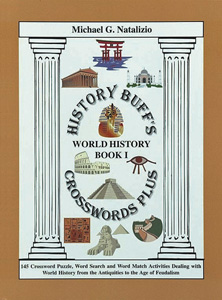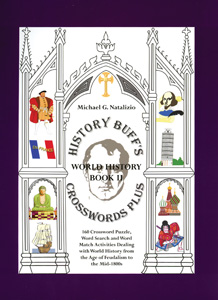HISTORY BUFF’S CROSSWORDS PLUS
Connect with a representative to create a custom curriculum for your district.
Crossword puzzles, word searches, and word match activities challenge students to learn, use, and absorb the vocabulary of history.
From technical terms to the names of people, places, wars, and treaties, these hefty, chronologically ordered resources are made to order for textbook review, homework, or initiating units of study. All three books truly cover world history, not just Western civilization.
| Size | 8½" x 11" |
|---|---|
| Publisher | Education Express |
| Grade | 6–12 |



